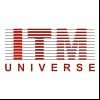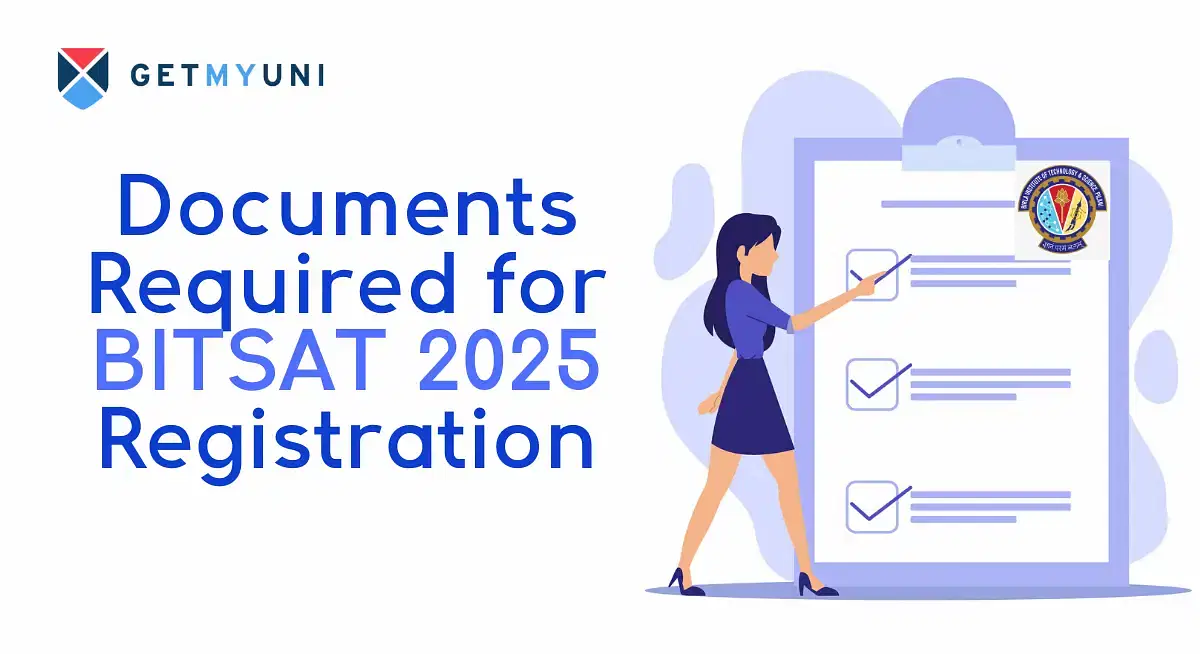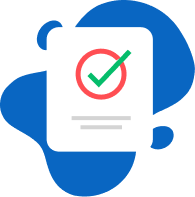
Table of Contents
BITSAT Mathematics Syllabus 2025 PDF will be available for download soon on the official website. The BITSAT 2025 Mathematics Syllabus includes topics such as Algebra, Trigonometry, Two-dimensional Coordinate Geometry and many more.
The BITSAT exam is conducted online two times a year. The BITSAT Maths syllabus 2025 is included only in the B.TECH course. The chapter-wise weightage of the BITSAT 2025 Maths syllabus is given in detail on the page below.
Download: BITSAT Previous Year Question Paper
Don't Miss: BITSAT 2025 Preparation in 15 Days
BITSAT Mathematics Syllabus 2025 PDF
The BITSAT Mathematics Syllabus 2025 will be available in a PDF format for the candidates. The download link is provided below:
| BITSAT 2025 Mathematics Syllabus PDF (Tentative) | Download PDF |
Also Download:
- BITSAT English Syllabus 2025
- BITSAT Physics Syllabus 2025
- BITSAT Chemistry Syllabus 2025
- BITSAT Biology Syllabus 2025
BITSAT 2025 Mathematics Syllabus
The BITSAT 2025 Maths syllabus consists of topics and sub-topics from 11th and 12th standard.
The detailed BITSAT Maths Syllabus 2025 is given below for candidates:
Algebra
- Complex numbers, addition, multiplication, conjugation, polar representation, properties of modulus and principal argument, triangle inequality, roots of complex numbers, geometric interpretations; Fundamental theorem of algebra.
- Theory of Quadratic equations, quadratic equations in real and complex number systems and their solutions.
- Arithmetic and geometric progressions, arithmetic, geometric and arithmetic, geometric series, sums of finite arithmetic and geometric progressions, infinite geometric series, sums of squares and cubes of the first n natural numbers.
- Logarithms and their properties.
- Exponential series.
- Permutations and combinations, Permutations as an arrangement and combination as selection, simple applications.
- Binomial theorem for a positive integral index, properties of binomial coefficients, Pascal’s triangle
- Matrices and determinants of order two or three, properties and evaluation of determinants, addition and multiplication of matrices, adjoint and inverse of matrices, Solutions of simultaneous linear equations in two or three variables, elementary row and column operations of matrices, Types of matrices, applications of determinants in finding the area of triangles.
- Sets, Relations and Functions, algebra of sets applications, equivalence relations, mappings, one•one, into and onto mappings, composition of mappings, binary operation, inverse of function, functions of real variables like polynomial, modulus, signum and greatest integer.
- Mathematical reasoning and methods of proofs, Mathematically acceptable statements. Connecting words/phrases – consolidating the understanding of “if and only if (necessary and sufficient) condition”, “implies'', “and/or”, “implied” by”, “and”, “or”, “there exists” and through variety of examples related to real life and Mathematics. Validating the statements involving the connecting words – difference between contradiction, converse and contrapositive. Mathematical induction
- Linear Inequalities, solution of linear inequalities in one variable (Algebraic) and two variables (Graphical)
Trigonometry
- Measurement of angles in radians and degrees, positive and negative angles, trigonometric ratios, functions with their graphs and identities.
- Solution of trigonometric equations.
- Inverse trigonometric functions
Two-dimensional Coordinate Geometry
- Cartesian coordinates, distance between two points, section formulae, shift of origin.
- Straight lines and pair of straight lines: Equation of straight lines in various forms, angle between two lines, distance of a point from a line, lines through the point of intersection of two given lines, equation of the bisector of the angle between two lines, concurrent lines.
- Circles: Equation of circle in standard form, parametric equations of a circle.
- Conic sections: parabola, ellipse and hyperbola their eccentricity, directrices & foci.
Three-dimensional Coordinate Geometry
- Coordinate axes and coordinate planes, distance between two points, section formula, direction cosines and direction ratios, equation of a straight line in space and skew lines.
- Angle between two lines whose direction ratios are given, shortest distance between two lines.
- Equation of a plane, distance of a point from a plane, condition for coplanarity of three lines, angles between two planes, angle between a line and a plane.
Differential calculus
- Domain and range of a real valued function, Limits and Continuity of the sum, difference, product and quotient of two functions, Differentiability.
- Derivative of different types of functions (polynomial, rational, trigonometric, inverse trigonometric, exponential, logarithmic, implicit functions), derivative of the sum, difference, product and quotient of two functions, chain rule, parametric form.
- Geometric interpretation of derivative, Tangents and Normal.
- Increasing and decreasing functions, Maxima and minima of a function.
- Rolle’s Theorem, Mean Value Theorem and Intermediate Value Theorem.
Integral calculus
- Integration as the inverse process of differentiation, indefinite integrals of standard functions.
- Methods of integration: Integration by substitution, Integration by parts, integration by partial fractions, and integration by trigonometric identities.
- Definite integrals and their properties, Fundamental Theorem of Integral Calculus, applications in finding areas under simple curves.
- Application of definite integrals to the determination of areas of regions bounded by simple curves.
Ordinary Differential Equations
- Order and degree of a differential equation, formulation of a differential equation whose general solution is given, variables separable method.
- Solution of homogeneous differential equations of first order and first degree
- Linear first order differential equations
Probability
- Various terminology in probability, axiomatic and other approaches of probability, addition and multiplication rules of probability.
- Conditional probability, total probability and Baye’s theorem
- Independent events
- Discrete random variables and distributions with mean and variance.
Vectors
- Direction ratio/cosines of vectors, addition of vectors, scalar multiplication, and position vector of a point dividing a line segment in a given ratio.
- Dot and cross products of two vectors, projection of a vector on a line.
- Scalar triple products and their geometrical interpretations.
Statistics
- Measures of dispersion
- Analysis of frequency distributions with equal means but different variances
Linear Programming
- Various terminology and formulation of linear Programming
- Solution of linear Programming using graphical methods, feasible and infeasible regions, feasible and infeasible solutions, optimal feasible solutions.
Mathematical Modelling
- Formulation of simple real life problems, solutions using matrices, calculus and linear programming.
Also Read:
Chapter-Wise Weightage in BITSAT Maths Syllabus
It is beneficial for the candidates to know the weightage as it helps them prepare for higher marked topics for the BITSAT exam.
The weightage of topics included in the BITSAT Mathematics syllabus 2025 is given in the table below:
| Chapters | Number of Questions | Weightage |
| Circles | 4 | 11% |
| Straight Lines | 3 | 7% |
| Pair of Straight lines | 3 | 7% |
| Sets, Relations & Functions | 3 | 4% |
| Complex Numbers | 1 | 4% |
| Properties of Triangles | 1 | 3% |
| Trigonometric Ratios & Identities | 2 | 3% |
| Trigonometric Equations | 2 | 3% |
| Probability | 2 | 3% |
| Matrices Determinants | 4 | 3% |
| Application of Derivatives | 7 | 3% |
| Statistics | 1 | 2% |
Also Read:
BITSAT Mathematics Exam Pattern 2025
The Maths section will only be for those students who have opted for B.Tech. The details regarding the BITSAT 2025 exam pattern is given below:
- For every correct answer, 3 marks are awarded.
- For every wrong answer, one mark will be deducted.
- A total of 130 questions will be in the exam.
- The total number of questions is given in the table below:
| Sections | Number of Questions |
| Physics | 30 |
| Chemistry | 30 |
| English | 10 |
| Logical Reasoning | 20 |
| Mathematics | 40 |
Recommended:
Best Books for BITSAT Maths Syllabus
The study material is important in order to prepare for the BITSAT exam.

The best books for the Maths syllabus recommended by the experts are given below:
| Name of the Book | Author’s Name |
| Integral Calculus | Arihant |
| Class XI and XII Mathematics | R.D. Sharma |
| Higher Algebra | Hall Knight and Bernard |
| Problems in Calculus in One Variable Algebra | I.A. Maron |
Quick Links:








































